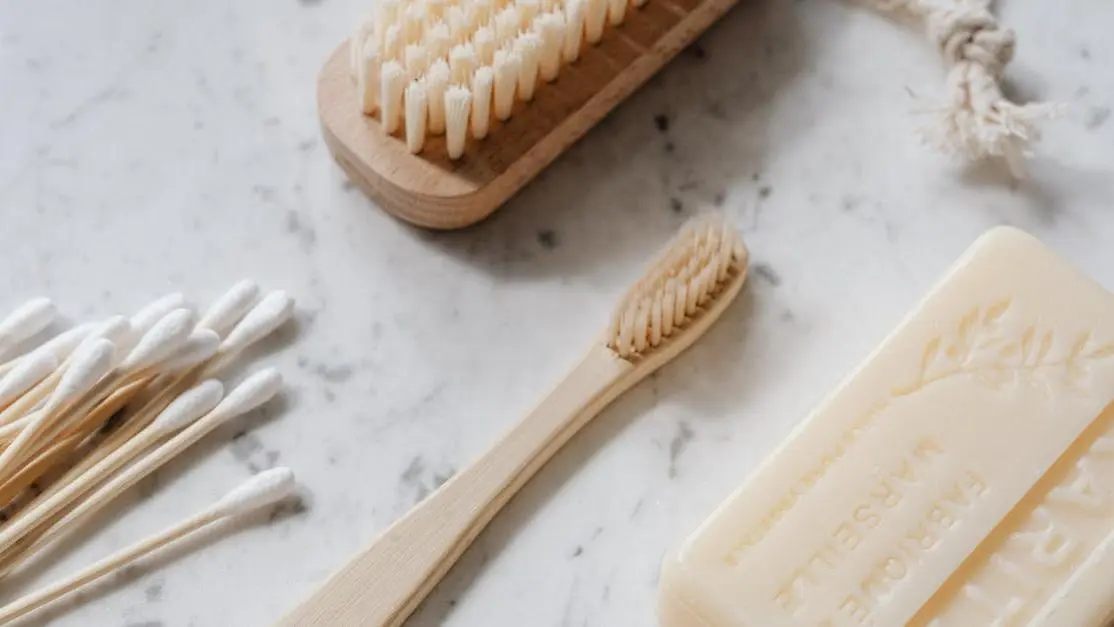Gums bleeding when brushing often signals potential oral health issues, primarily caused by plaque buildup at the gumline leading to gingivitis.
It's crucial to maintain effective oral hygiene practices like gentle brushing and regular flossing. Painless treatments and lifestyle changes, such as quitting smoking and improving diet, can significantly improve gum health. Explore advanced pain-free solutions and effective prevention techniques in the article.
Common Causes of Bleeding Gums
Understanding why your gums bleed when brushing is essential in preventing this common dental issue. Bleeding gums can be a signal for numerous underlying conditions or habits, and addressing these underlying causes can greatly improve your oral health.
Gingivitis: The Initial Stage of Gum Disease
Gingivitis is one of the most prevalent causes of bleeding gums. It is an early stage of gum disease, characterized by inflammation of the gums. This condition is primarily caused by the accumulation of plaque, a sticky film of bacteria that forms around your teeth. If not regularly removed through brushing and flossing, plaque can irritate your gums and cause them to bleed.
- Prevention: Regular brushing and flossing are crucial. Use a soft-bristled toothbrush to avoid irritating your gums.
Periodontitis: An Advanced Gum Disease
If untreated, gingivitis can progress into periodontitis, a more severe form of gum disease. Periodontitis affects the tissues and bones that support your teeth, leading to significant gum bleeding, discomfort, and eventually, tooth loss.
- Significance: Seek professional help if you notice persistent bleeding, swelling, or receding gums.
Incorrect Brushing Technique
A common but often overlooked cause of bleeding gums is incorrect brushing. Many people unknowingly apply too much pressure or use hard-bristled toothbrushes. These habits can lead to gum irritation and make them bleed.
- Tip: Adopt a gentle circular motion when brushing. Replace your toothbrush every three to four months or sooner if bristles fray.
Lifestyle Factors Impacting Gum Health
Several lifestyle choices can also contribute to gum issues. Smoking, for instance, reduces blood flow to your gums, impairing their ability to heal and making them more prone to bleeding. Similarly, a diet low in essential nutrients, like vitamins C and K, can negatively impact gum health.
- Suggestion: Quit smoking and include nutrient-rich foods in your diet to support healthier gums.
Painless Solutions to Stop Bleeding Gums
If you frequently notice your gums bleed when brushing, understanding the available solutions and remedies is crucial to stopping it effectively. Most importantly, these methods aim to provide comfort and enhance your oral health without pain.
Professional Dental Treatments
Regular dental check-ups play a pivotal role in maintaining healthy gums. Professional cleanings can effectively remove plaque and tartar that your regular brushing may miss. Procedures like scaling and root planing tackle deep-seated tartar, vital for addressing chronic gum issues.
- Comfort-first approach: Technology such as the Wand numbing system ensures procedures are pain-free and stress-free.
Home Remedies for Managing Bleeding Gums
Incorporating some simple home care practices can make a significant difference. Improved oral hygiene is fundamental: gentle brushing twice a day and flossing daily removes food debris and plaque, reducing irritation. Additionally, using an antibacterial mouthwash can help kill bacteria responsible for gum inflammation.
- Saltwater rinse: A natural and gentle way to soothe inflamed gums. Mix half a teaspoon of salt in a glass of warm water and rinse several times a day.
Lifestyle and Diet Modifications
Certain lifestyle changes can also improve your gum health. Quitting smoking is invaluable, as it restores blood flow to your gums and aids healing. Moreover, dietary changes, such as consuming more vitamin C from fruits like oranges and strawberries, support your gum's health and resilience against bleeding.
When to Seek Professional Help
It might be time to consult a dental professional if your gums bleed regularly when brushing. Recognizing the symptoms that call for professional intervention is crucial in addressing and treating underlying dental issues.
Key Symptoms Indicating a Need for Consultation
Persistent gum bleeding is a strong indicator of possible gum disease. If bleeding is accompanied by symptoms such as bad breath, swollen gums, or an unpleasant taste in the mouth, a dental visit becomes necessary.
- Diagnoses by Dentists: Dentists can diagnose conditions like gingivitis or periodontitis and suggest appropriate treatments to curb bleeding and promote healing.
Importance of Early Intervention
Early professional intervention can prevent gum problems from becoming severe. Regular dental examinations help detect early signs of gum disease, making treatment more manageable and effective.
- Benefit: Cuts down potential complications and long-term impact on oral health.
Importance of Regular Dental Hygiene
Daily oral hygiene practices form the backbone of maintaining healthy gums and preventing them from bleeding. By establishing and maintaining a strong dental care routine, you can avert many oral health problems before they start.
Routine Brushing and Flossing
Aim to brush twice daily using a soft-bristled toothbrush and fluoride toothpaste. Flossing once a day is equally important as it removes debris and plaque from between your teeth and along the gumline where a toothbrush might not reach.
- Technique: Use a gentle, back-and-forth motion while brushing, and ensure to cover all areas, including the tongue.
Regular Dental Check-Ups
Routine check-ups enable your dentist to provide preventative care, catch gum issues early, and offer professional cleaning to ensure optimal oral health.
- Frequency: Schedule dental visits at least every six months for exams and professional cleanings.
Additional Hygiene Tips
Incorporating tools like antibacterial mouthwash can add an extra layer of protection. A healthy lifestyle that includes a balanced diet, rich in essential nutrients like vitamin C, can strengthen your gums and reduce the risk of bleeding.
- Stay informed: Awareness of new dental technology and practices can also contribute to healthier gums as methods continually improve.
By integrating these hygiene practices into your daily routine, you take proactive steps towards healthier gums, reducing the likelihood of bleeding and enhancing overall oral well-being.
Innovations in Pain-Free Dentistry
With advancements in dental technology, managing bleeding gums has become significantly more comfortable and efficient. This section covers some modern techniques that not only address bleeding gums but also emphasize patient comfort.
Laser Dentistry: A Gentle Approach to Gum Health
[Laser dentistry](https://cookstowndentist.ca/early-signs-of-gum-disease/) offers a state-of-the-art solution for treating gum-related issues, including bleeding gums. The precision of laser technology allows for targeted treatment, reducing discomfort and the need for invasive procedures.
- Precision and Comfort: Lasers can selectively remove inflamed gum tissue without affecting surrounding areas, making procedures less painful.
- Fast Recovery: Patients often experience reduced healing times due to the minimized tissue trauma.
Electric Toothbrushes: For Effective, Gentle Cleaning
Electric toothbrushes provide a superior clean compared to manual brushing. They are particularly beneficial for those experiencing bleeding gums as they offer consistent pressure with different settings to optimize brushing.
- Advanced Cleaning: These toothbrushes can reach areas that may be missed with manual brushing, effectively reducing plaque buildup.
- Customization: Many models feature gum care modes that ensure a gentler clean, essential for sensitive gums.
Sedation Dentistry: Minimizing Anxiety and Discomfort
For patients who experience anxiety or fear concerning dental procedures, sedation dentistry proves to be an invaluable innovation. It ensures that treatments for bleeding gums and related conditions are stress-free.
- Variety of Options: From mild sedatives that reduce anxiety to deeper sedation for more intensive procedures, options are tailored to patient needs.
- Confident Care: This approach allows patients to receive necessary treatment without distress, improving overall dental health outcomes.
Dietary Tips for Healthy Gums
A good diet plays a crucial role in maintaining strong, healthy gums. Proper nutrition aids in combating infections and promoting optimal oral health, especially if you're experiencing gums that bleed when brushing.
Consume Foods Rich in Vitamins and Minerals
Certain nutrients are particularly beneficial for gum health. Ensuring your diet includes sufficient amounts of these vitamins can significantly strengthen your gums.
- Vitamin C: Found in fruits like oranges and strawberries, it aids in tissue repair and keeps your gums firm.
- Vitamin K: Present in leafy greens like spinach and kale, this vitamin supports blood clotting and helps prevent gum bleeding.
Avoid Foods that Irritate Gums
Some foods can exacerbate gum irritation and contribute to bleeding. Modifying your diet by minimizing or avoiding these items can have positive effects.
- Sugary Snacks: These contribute to plaque formation and can irritate gums.
- Acidic Foods: Citrus fruits and carbonated drinks may weaken enamel and tissue, increasing sensitivity and bleeding.
Stay Hydrated
Adequate hydration is often overlooked but plays a vital role in oral health. Water helps in washing away bacteria that can lead to plaque buildup and gum issues.
- Support Oral Health: Drinking water after meals can also aid in removing food particles and reducing acid levels in your mouth.
Myths and Facts About Gum Health
Understanding the realities of gum care is essential in effectively managing and preventing bleeding gums. Let’s clear up some common misconceptions to enhance your knowledge and oral health practices.
Myth: Bleeding Gums Are Normal
Bleeding gums should not be dismissed as a normal occurrence. While it might happen occasionally, persistent bleeding is a warning sign of potential gum disease.
- Fact: Addressing the cause of bleeding with proper care and professional advice can prevent more serious conditions like periodontitis.
Myth: Brushing Harder Improves Gum Health
Some people believe that brushing harder will clean teeth better. However, this can actually damage gum tissue and exacerbate bleeding.
- Fact: A gentle technique using a soft-bristled toothbrush is more effective in maintaining gum integrity.
Myth: Dental Visits Aren’t Necessary if There’s No Pain
Avoiding dental visits until you experience pain can lead to unchecked dental issues. Many gum diseases progress silently, showing symptoms like bleeding but not necessarily pain.
- Fact: Regular check-ups help detect and treat dental issues early, preventing complications.
Conclusion: Ensuring Gum Health Through Comfort and Care
Maintaining healthy gums is integral to your overall oral health and well-being. Pain-free treatments and understanding the root causes of bleeding can significantly improve your gum health management. By incorporating daily hygiene practices, adopting a balanced diet, and utilizing modern dental advancements, you can ensure your gums remain healthy and strong. Remember, the right mix of professional care and personal effort is key to preventing gums from bleeding when brushing.

